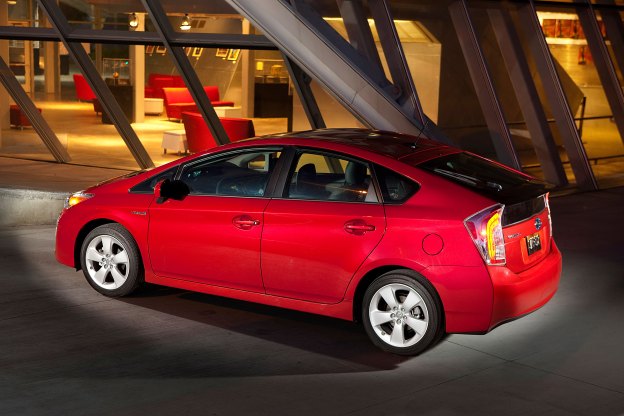 Toyota has been trying to expand the Prius “family” by adding new models like the Prius C and Prius V, as well as the MPGe master Prius plug-in. Each new Prius permutation was meant to make Toyota’s signature product do something different. The latest version, the Prius Persona Series Special Edition, is not a completely new car, but it’s trying to accomplish the same mission as the other Priuses (Prii? Priot?) by being a bit classier.
Toyota has been trying to expand the Prius “family” by adding new models like the Prius C and Prius V, as well as the MPGe master Prius plug-in. Each new Prius permutation was meant to make Toyota’s signature product do something different. The latest version, the Prius Persona Series Special Edition, is not a completely new car, but it’s trying to accomplish the same mission as the other Priuses (Prii? Priot?) by being a bit classier.
The key word here is a bit. Like most automotive special editions, the changes that make the Persona are not substantial. On the outside, Toyota added new 17-inch wheels and three unique paint colors: Black Cherry Pearl, Blizzard Pearl, and plain old Black. None of this makes the Prius Persona more efficient or luxurious.
The interior gets SofTex leather seats with red stitching and a SofTex-wrapped steering wheel. The shifter and door panels are trimmed in chrome. That should make this Prius’ interior a little more interesting but, again, the changes aren’t significant enough to make the Persona Special Edition that special.
Nothing in life is free, so the Persona costs $27,890, a noticeable hike from the base Prius Two’s $24,960 base price. However, it’s possible to spend more on a Prius. A fully loaded Prius Five starts at $30,765, and the Prius plug-in starts at $32,760 and a loaded Advanced model costs $40,285.
You know a car has truly arrived when its maker rolls out a special edition. The Prius Persona may just be new paint and leather seats, but Toyota knows that, because it’s a Prius, people will still buy it and at least feel like they got a little something extra. That’s because those buyers will be thinking more about how much they want a Prius than how much they want it to be special.
That should be good enough for Toyota, especially since the company has had trouble producing a truly upmarket purpose-built hybrid. Lexus’ HS 250h sedan (since discontinued) and CT 200h hatchback haven’t been that successful, and there may be a limit to how much people will pay for a regular Prius.
With four distinct models already on sale, the Prius already has plenty going on. Those models may not carry a “special edition” badge, but they should be everything most buyers need from a hybrid.
Editors' Recommendations
- 2021 Toyota Prius vs. 2021 Toyota Prius Prime
- For 2020, Toyota is finally fixing the Prius Prime’s two biggest downsides


